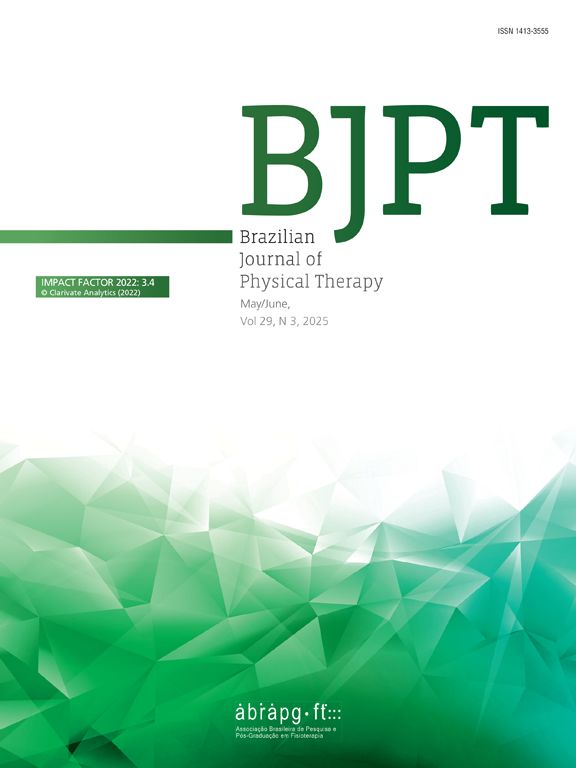
1st STUDENT SCIENTIFIC CONFERENCE OF THE BRAZILIAN ASSOCIATION FOR RESEARCH AND POSTGRADUATE IN PHYSIOTHERAPY (ABRAPG-FT)
Mais dadosParticipation is currently understood as a family of constructs, which include: (1) frequency with which an activity is carried out; (2) level of involvement; (3) personal preference regarding the task; (4) competence, which is the ability to perform a certain task; and (5) self-perception, related to the recognition of one's ability to perform tasks. In children up to 5 years of age, who spend most of their time at home, participation can be affected by environmental factors, whether structural, family or socioeconomic. Participation can be measured through the Young Children's Participation and Environment Measure (YC-PEM), translated into Portuguese as Medida da Participação e do Ambiente – Crianças Pequenas, which is a questionnaire applied to parents/guardians, which assesses the frequency, involvement, desire for change, and environmental factors in the home, daycare/preschool, and community sections.
ObjectivesTo identify predictors for participation at home by children between zero and five years of age with and without disabilities.
MethodsCross-sectional and descriptive study. Those responsible for children with or without disabilities, from age 0 to 5 years and 11 months, recruited from university hospitals and teaching clinics through spontaneous demand were included. The 143 participants answered a sociodemographic questionnaire followed by the application of the YC-PEM. The outcome variables were frequency, with a mean score from 0 to 7, and involvement, from 0 to 5, of YC-PEM. The variables analyzed as predictors were environmental factors of the YC-PEM, classified into supports, barriers, environmental helpfulness, environmental resources and overall environmental support; sex, age in months and typicality (with or without disability) of the children; gender, age in years and schooling of those responsible; family income. The predictor analysis was carried out in two steps: 1) Spearman's correlation check to measure the association between variables, significant if p<0.20; and 2) Simple regression for continuous variables and binary regression for dichotomous variables identified as significant in step 1, significant if p<0.05, presenting r², which portrays the proportion of predictor variance in relation to the outcome.
ResultsNo correlation was found between the typicality of the child and the frequency (p=0.768) and involvement (p=0.240) in participation; the same was observed for the other variables related to the child, guardian, and family income. It was observed that the environmental factors analyzed by the YC-PEM itself predicted participation: environmental supports predicted both attendance (r²=0.046, p=0.010) and involvement (r²=0.037, p=0.021) at home. In addition, the frequency of participation was also predicted by the help (r²=0.048, p=0.009) and support (r²=0.046, p=0.010) present in the environment.
ConclusionIt was observed that having or not having a disability does not interfere with children's participation at home, being predicted by the environmental factors of the house. Therefore, having more supports and aids at home makes the child carry out activities more frequently and with commitment.
ImplicationsThe results can guide the planning of interventions aimed at increasing the participation of young children with and without disabilities, in addition to enabling collaboration between therapists and family members to support activities at home.
Conflict of interest: The authors declare no conflict of interest.
Acknowledgment: Not applicable.
Ethics committee approval: Ethics Committee of the Faculty of Health Sciences of the Federal University of Rio Grande do Norte – FACISA/UFRN, under registration CAEE: 79628017.0.0000.5568.




